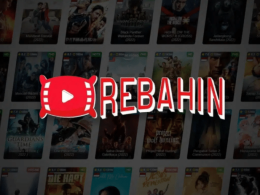In today’s digital era, content writing has emerged as a potent means of disseminating knowledge, swaying ideas, and engrossing readers. Whether you’re an established writer or just getting started, mastering the skill of producing engaging articles is crucial. From outlining your work through proofreading and publishing it, this article will show you the ropes.
The Importance of a Well-Structured Article
An article’s ability to captivate its audience hinges on how effectively it is constructed. Create a strong foundation for your writing by beginning with an engaging introduction. The transition from one part to the next should be smooth, leading the reader logically through your argument.
Understanding Your Target Audience
It’s important to know who you’re writing for before you start typing. Think about what they like, what they’re interested in, and what hurts them. Create content that speaks directly to their needs and interests.
Keyword Research and SEO Integration
Your article’s search engine rankings will increase if you include relevant keywords throughout it. Find popular search terms related to your topic and use them wisely in your writing.
Crafting an Attention-Grabbing Introduction
An effective opening grabs the interest of the reader and encourages them to keep reading. Try asking a thought-provoking question, revealing an interesting fact, or narrating an exciting tale.
Developing Engaging Headings and Subheadings
Use of Explicit Titles and Subtitles divide the text into manageable chunks. Make use of headlines that tell the reader exactly what to expect from that segment.
Maintaining a Conversational Tone
Using a conversational tone helps you connect with your audience. To make your writing more approachable and interesting to the reader, try modelling it after a conversation.
Incorporating Personal Pronouns for Reader Engagement
Directly addressing the reader using terms like “you” and “we” makes them feel like they belong to the conversation. This develops interest and fosters familiarity.
Utilizing the Power of Rhetorical Questions
Rhetorical questions generate interest and inspire readers to think. They allow readers to dwell on the issue, enticing them deeper into your content.
Painting Pictures with Analogies and Metaphors
Complex ideas are simplified through the use of analogies and metaphors. They help your audience better understand and remember what you’re saying by painting vivid mental pictures.
Keeping it Brief: The Power of Concise Writing
With so much data available online, conciseness is of the essence. Keep your words and paragraphs short and to the point so that your message gets across.
Using the Active Voice for Impactful Sentences
Using the active voice will give your writing more energy. It may make your sentences more interesting to read and more effective in conveying your point.
Creating Flow with Transitional Phrases
Transitional sentences help connect concepts without interrupting the flow and leading to jumbled thinking. The use of transitional words and phrases such as “however,” “in addition,” and “consequently” helps readers follow the logic of your arguments.
Addressing Perplexity and Burstiness for Reader Intrigue
As for the burstiness, it’s achieved by altering sentence length and structure, while the perplexity is achieved by giving information that is unexpected or fascinating. It’s important to strike a balance between the two so that readers won’t get bored.
Maintaining Specificity and Context
Make sure your material is both unique and pertinent despite its complexity and rapid pace. Maintaining context is essential for the reader’s understanding, so stay on subject.
Editing and Proofreading: Polishing Your Masterpiece
Spend some time after you’ve written editing and proofreading it. Fix the spelling, punctuation, and grammatical mistakes. The time and care used to produce a polished piece is indicative of these qualities.
Conclusion: Your Journey as a Proficient Content Writer
The road to becoming a skilled writer is a long one. Adopt a mindset of incessant improvement, try out new approaches to writing, and listen to criticism. If you put in the time and effort, you will eventually succeed.
FAQs
How do I effectively integrate keywords into my content?
One of the keys to successful keyword integration is to work the keywords into the content without forcing them or changing the flow. Avoid filling your sentences with unnecessary information.
Can I use humor in my articles?
Unquestionably! Entice your readers using humor, but make sure it fits well with your subject and target market. Humor should not be rude or improper.
3. How can I make my conclusions impactful?
Concisely summarize the main themes so that the reader knows what they are. Finish with a question that prompts more reflection or a call to action.
Should I focus on short or long sentences?
First, using both will give your writing more rhythm. Sentences with fewer words are more direct, while those with more words are more in-depth. Harmony is essential.
5. Where can I find reliable sources for my content?
Try to find credible resources such as academic journals and books written by experts in the field. Include references to strengthen your argument.





